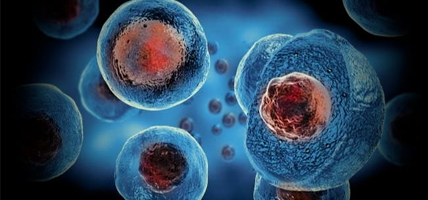


A Stem Cell is known for its unique ability to get transformed into any other body cells with a specialized function. They are the undifferentiated cells of multi-cellular organisms that are capable of producing an indefinite number of self-type and to get differentiate into other functional cells.
Stem cells can act as a renewable source of cells for replacement of tissue and cells which could help the body to repair self in case of spinal cord injury, heart disease, macular degeneration, diabetes, rheumatoid arthritis, stroke burns and osteoarthritis, etc. The stem cells are present in bone marrow, adipose tissue, umbilical cord blood.
The properties of stem cells are described by the two scientists, James and Ernest MacCulloch in the early year of the 1960s. The unique properties inherited by stem cells include:-
1) As non-specialized cells: The fundamental properties include that the cells do not have any specific structure allowing performing any function of specificity.
2) Proliferation: They have the ability of self-renewal through which the numerous cell divide to maintain its undifferentiated state for indefinite periods.
3) Differentiation: They are capable differentiating into any mature specialized tissue or cells type such as blood cells, muscle cells or nerve cells under physiological and experimental conditions required to repair deleted or repair adult cell population or tissue.
4) Plasticity: Stem cells from one type of tissue can give rise to cell types of completely different tissue, this phenomenon known as plasticity. For examples: Haematopoietic stem cells developing into heart muscle and blood cells and then turning into neuron cells, etc.
The stem cells two types play an important role in the body.
1) The embryonic stem cells: These can be isolated from the inner cell mass (ICM) of the blastocyst of the human embryo.
2) The adult stem cells: Also known as a somatic stem cell. These are the undifferentiated cells found among differentiated cell in an organ or tissue which can renew itself to yield the major specialized cell type of organ or tissue.
One source of stem cells is umbilical cord blood. It considered as a rich source of primitive stem cells as compared to adult stem cells. Few features making it more valuable includes:
a) Cord blood from Stem cells (SC) from child stored for a perfect match during the autologous transplant if needed with no risk of Graft Vs Host Disease (GVHD),
b) It is also a close match for siblings or family members in case of needs with no risk of rejection.
Further, the umbilical cord blood stem cells have advantages features such as -
a) Plasticity: potential to change into another cell type,
b) Homing: travel to the site of tissue damage and
c) Engraftment: to unite with other tissue.
The advantages of stem cells are useful in the treatment of various profiles of diseases by lowering the symptoms to reduce drug intake. With advance research, many of the chronic diseases could be cured by stem cell therapy which includes Diabetes, Parkinson’s, Rheumatoid arthritis, Alzheimer, heart infraction, Crohn's, congenital, traumatic brain injury repair, osteoarthritis and spinal cord injury, hepatotoxicity and neurodegenerative, etc.
The cell-based regenerative therapies of the treatment of certain diseases are 1) Haematopoietic Stem Cell transplantation and 2) Mesenchymal Stem Cell trachea transplantation.
1) Haematopoietic Stem Cell Transplantation (HSCT): It is known for the ability to achieve long term reconstruction of lymphoid and myeloid lineages having remarkable features of the capacity of regeneration from home to marrow spaces, the ability of cryopreservation. The first transplant of HSC was successful in the treatment of acute leukaemia by E. Donnall Thomas. The HSCT used to colonize the damaged marrow and repopulate the blood and the immune with functional cells eventually. And the bone marrow graft (bone marrow transplant) in which cancer patient to survive from the lethal dosage radiation of chemotherapy that destroys bone marrow stem cells. During the procedure, the patients own marrow harvested before treating cancer and then re-infused into the body after the treatment.
2) Mesenchymal Stem Cell Trachea transplantation (MSC-TT): The scientists in the year 2008, used MSC to bioengineer section of the trachea and transplanted into women as she severely damaged upper airway by tuberculosis. Her bone marrow stem cell was cultured in a laboratory by tissue engineering. In this process, the trachea from donor stripped (interior and exterior linings of the cell) leaving behind scaffold connective tissue of trachea. The recipient’s stem cell was then re-colonize the interior scaffold and isolated the epithelial cells to re-colonize the exterior part of the trachea. As recipients own cell prevented immune rejection and even eliminated the use of immune-suppression therapy.
Many decades of stem cell research, therapies are been developed which can play a magnificent game-changing role in medicine and biotechnology. The stem cell has influenced transplant and medicine. Many untreatable diseases like neurodegenerative currently becoming possible to treat by stem cell therapies. It is the beginning of the establishment of tissue and stem cell bank to preserve the stem cells as they cloud to be a source of regenerative medicine in the struggle of present and future diseases prospects for the betterment of human life and race of survival.
Please contact Lab science research product suppliers in India at support@clementiabiotech.com to provide you details and quotations.
